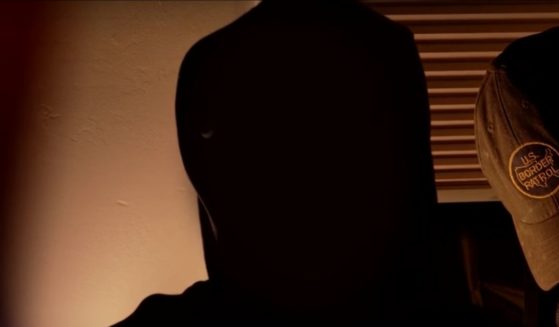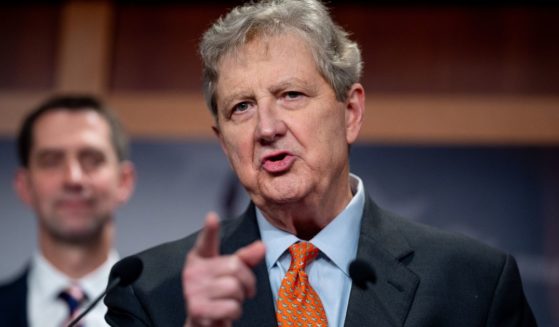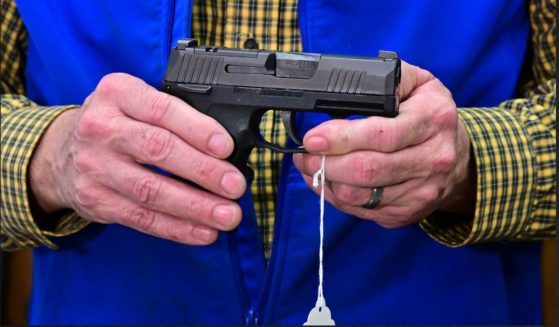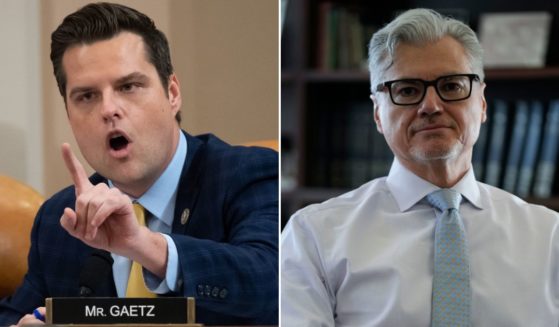National Archives Admits It Doctored Photo of Anti-Trump Protest
The anti-Trump nature of the 2017 Women’s March will be blurred for anyone who relies on a photograph currently displayed at the National Archives and Records Administration as a promotion for its exhibit on women’s suffrage.
The National Archives used a photograph from the 2017 demonstration as part of a promotional display for an exhibit keyed to the 100th anniversary of American women being granted the right to vote in 1920. The 2017 photo was paired with an image of a 1913 suffrage march in Washington to show two protests in the same place but a century apart.
However, the 2017 photo has been altered, according to The Washington Post.
The National Archives, which on its website calls itself “the nation’s record keeper,” blurred the name of President Donald Trump where it was used on protest signs, and also blurred references to female genitals, which were present on some protest signs.
The Post used as an example a sign that originally read “God Hates Trump” but now has the president’s name blurred. A sign reading “Trump & GOP — Hands Off Women” also has Trump’s name blurred.
The Archives said the alterations were made intentionally, and that David S. Ferriero, the archivist, an appointee of former President Barack Obama, endorsed the decision to alter the image.
“As a non-partisan, non-political federal agency, we blurred references to the President’s name on some posters, so as not to engage in current political controversy,” Archives spokeswoman Miriam Kleiman said in a statement.
“Our mission is to safeguard and provide access to the nation’s most important federal records, and our exhibits are one way in which we connect the American people to those records. Modifying the image was an attempt on our part to keep the focus on the records.”
Kleiman said that references to female genitals were scrubbed because they could be perceived by groups including students and children as inappropriate.
The Archives “only alters images in exhibits when they are used as graphic design components,” Kleiman said in the statement.
“We do not alter images or documents that are displayed as artifacts in exhibitions,” she said. “In this case, the image is part of a promotional display, not an artifact.”
Many leftists said the full wrath of protesters should have been on display.
The new normal for the United States. You don’t just wake up here. We crept into this time and place.
The National Archive digitally altered and edited and blurred out all signs from the 2017 Women’s March that were critical of @realDonaldTrump. https://t.co/2nZY0UQuNV
— Shaun King (@shaunking) January 18, 2020
As I’ve argued in my work, it’s not the #freespeech of racists and misogynists that is most at risk of censorship. It’s speech that threatens power, especially speech by women that seeks to hold men accountable for their abuses. #freespeechforwomen https://t.co/JS6d2JFeeg
— Mary Anne Franks (@ma_franks) January 18, 2020
Some historians criticized the National Archives.
“There’s no reason for the National Archives to ever digitally alter a historic photograph,” Rice University historian Douglas Brinkley said. “If they don’t want to use a specific image, then don’t use it. But to confuse the public is reprehensible. The head of the Archives has to very quickly fix this damage. A lot of history is messy, and there’s zero reason why the Archives can’t be upfront about a photo from a women’s march.”
One professor was particularly outraged over the decision to blue references to women’s genitals.
“Doctoring a commemorative photograph buys right into the notion that it’s OK to silence women’s voice and actions,” said Wendy Kline, a history professor at Purdue University. “It is literally erasing something that was accurately captured on camera. That’s an attempt to erase a powerful message.”
Archives spokesman John Valceanu said the changes were approved by Getty Images, which licensed the images for use by the Archives, but Getty told The Post in an email Friday that it was “still determining” whether it had actually done so.
Truth and Accuracy
We are committed to truth and accuracy in all of our journalism. Read our editorial standards.












